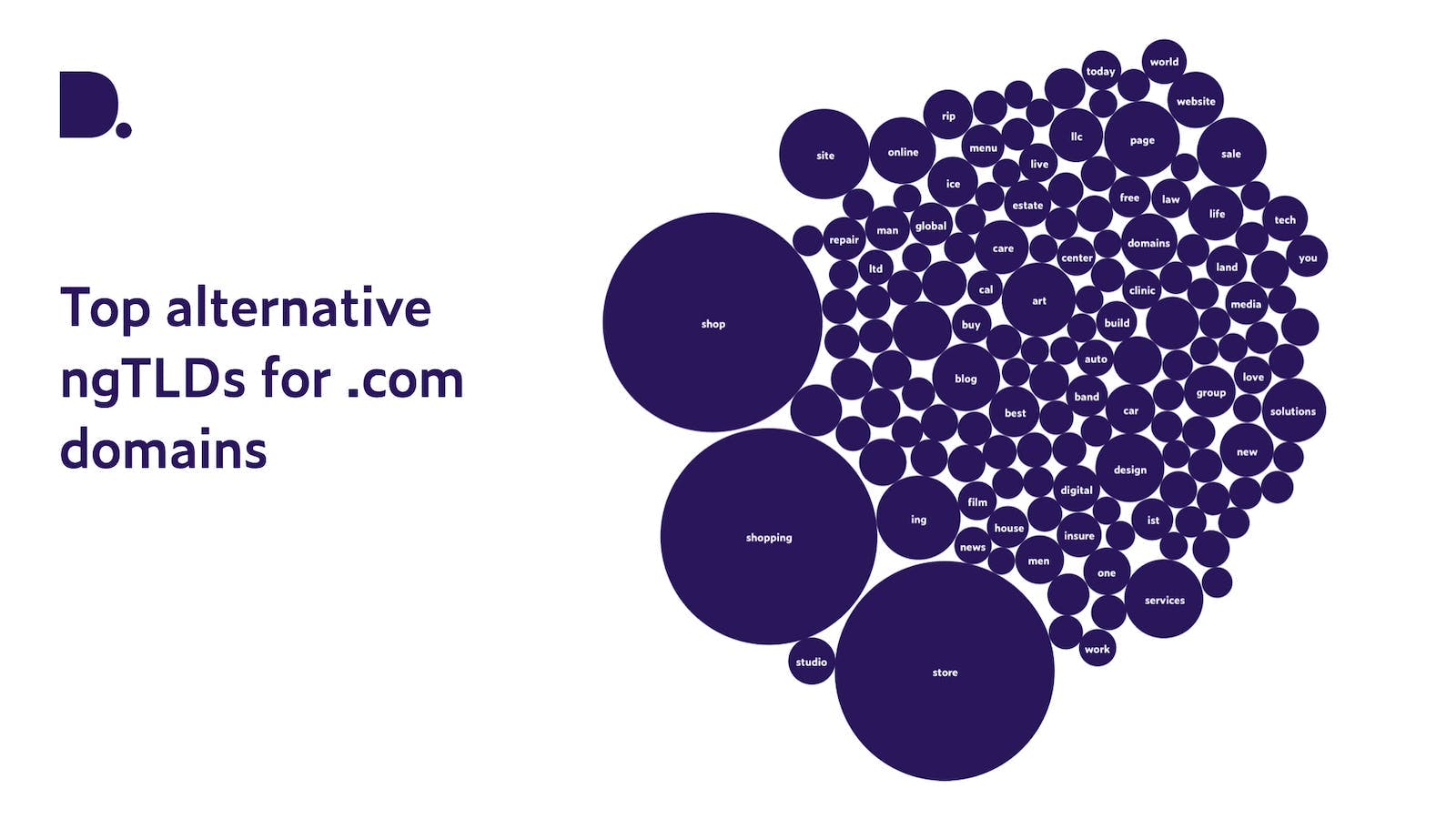Finding alternatives to .com
- almost 3 years ago
- 3 min read
.com is undoubtedly the most used top-level domain (TLD) these days, with just over 160 million registered domains. However, there are thousands of new gTLDs on the rise that are much more memorable or catchier than .com and can benefit creative business owners.
As most people know, .com is - by far - the most used top-level domain (TLD). There are just over 160 million registered domains. Second is .cn, the TLD for China, with only 18 million domain names (Verisign, December 2022).
In 2012, new generic TLDs (ngTLDs) were launched with the result that there are now more than 1,200 new TLDs to choose from. There are many different kinds, examples include, .restaurant, .shop or .luxury.
But if you look at the numbers, registrants are conservative and stick mostly with .com. This probably has to do with trust and authority that .com has established, but it could also be that registrants don’t know about the existence of ngTLDs.
We believe in the power of ngTLDs. They make the internet more diverse and easier to understand: a .restaurant website is a place where you can eat and a .shop is an online store.
Let’s look at a few examples where a ngTLD could make a domain name shorter, more memorable or just catchier. For example, www.dynastie-restaurant.de/ could be transformed to www.dynastie.restaurant, equally, www.oceanflowyoga.co.uk/ could be renamed to www.oceanflow.yoga and the dog food company Pedigree may strengthen their brand identity by using www.pedigree.dog. If your business name is linked to a common word, you can distinguish yourself with the type of business, e.g. johnsmith.dentist, or by location: johnsmith.nyc.
We believe in the power of ngTLDs. They make the internet more diverse and easier to understand: a .restaurant website is a place where you can eat and a .shop is an online store.
Therefore, the data science team at Dataprovider.com has created TLD suggestions. It is a suggestion tool that looks at the most important keywords on a website and compares these with the keywords that are used the most on a specific ngTLD. If that’s the case, that TLD will be recommended. Apart from that, we look at other characteristics we know of a website, including geography. For example: if it’s an online store, then the suggestions will be .shop or .store.
Our results show that around 4% of all .com domains could be using .shop, .store or .shopping. These top three are followed by .site, .ing, .services, .page, .art, .sale and .design.
Let’s take a look at the nearly 161 million domains listed in the .com zone file and analyze what ngTLDs are suitable alternatives based on the content of the website.
Our results show that around 4% of all .com domains could be using .shop, .store or .shopping. These top three are followed by .site, .ing, .services, .page, .art, .sale and .design. Figure 1 shows several more of the top ngTLD alternatives for .com
The transition from .com to ngTLDs can be a slow process as it usually takes time before people embrace something new. Also, Verisign is doing a great job at keeping .com as the largest TLD. We don’t expect this to change anytime soon. However, there are plenty of great TLDs on offer for the creative and courageous business owners that can help their business stand out and communicate more clearly what they’re about. In the end, this will also make it easier for users to navigate the web.
